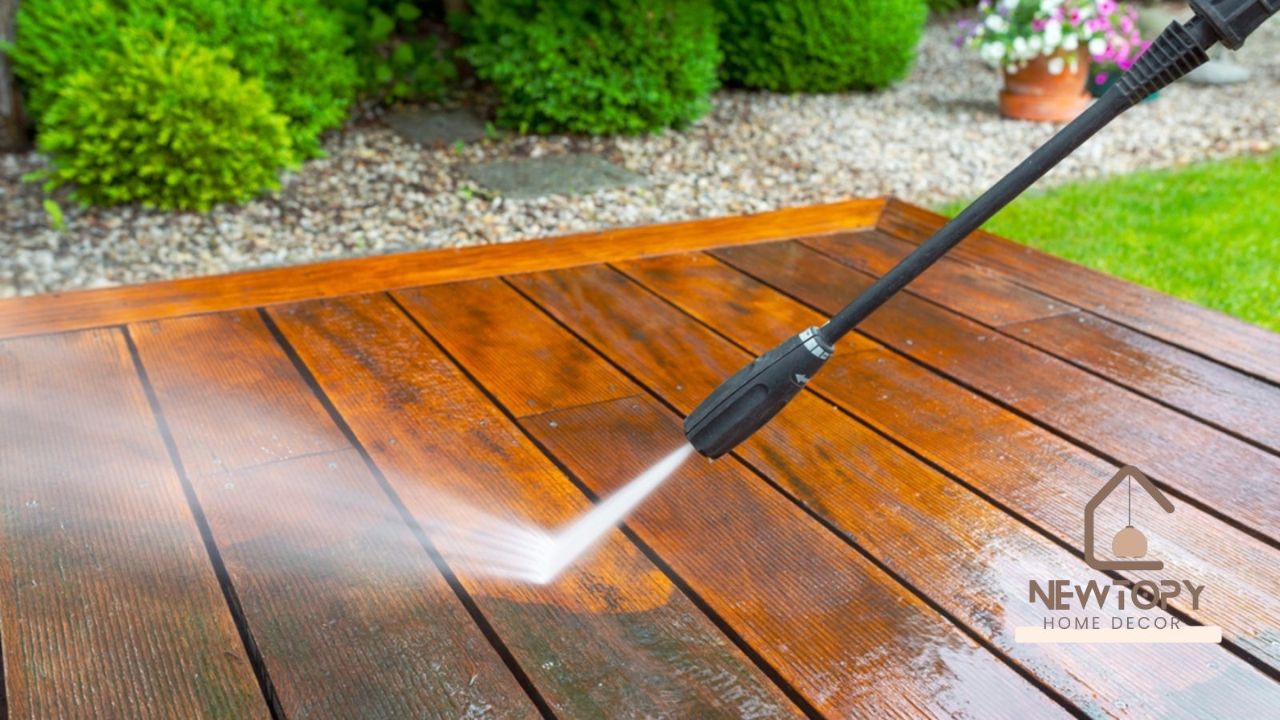Pressure washing can transform your property’s appearance in hours, but one wrong move can cost you thousands in repairs. Many homeowners in Winston-Salem NC learn this lesson the hard way when they discover gouged siding, damaged windows, or destroyed landscaping after their cleaning project.
The good news? Most pressure washing damage is completely preventable when you know what to watch for and how to protect your property.
Wood Damage: The Most Expensive Mistake
Wood surfaces suffer the worst damage from pressure washing, and the results aren’t always immediately visible. Cedar siding, deck boards, and wooden fences can look fine right after cleaning but show deep gouges and splintering once they dry.
What happens: Water pressure above 1,500 PSI can strip away soft wood fibers, creating permanent grooves. These grooves collect dirt faster and allow moisture to penetrate deeper, leading to rot and insect problems.
Prevention steps:
- Keep pressure below 1,200 PSI for any wood surface
- Hold the nozzle at least 12 inches away from wood
- Move the spray in smooth, overlapping strokes
- Never spray against the wood grain
- Test an inconspicuous area first
For composite decking, use even lower pressure (800-1,000 PSI) since the plastic components can melt or warp under high heat and pressure.
Paint Stripping: When Clean Becomes Costly
Nothing ruins a pressure washing job faster than accidentally stripping paint from your siding or trim. Paint removal creates uneven surfaces that require extensive prep work before repainting.
The problem: Paint adheres differently depending on its age, type, and the surface underneath. Latex paint over wood is particularly vulnerable, while oil-based paint on metal is more resilient.
How to protect painted surfaces:
- Start with wide-angle nozzles (40-degree or wider)
- Begin at the lowest effective pressure
- Keep the nozzle moving constantly
- Work from top to bottom to prevent water from getting behind loose paint
- Stop immediately if you see paint chips flying
If your home was built before 1978, be extra cautious. Disturbing lead-based paint creates serious health hazards and may require professional remediation.
Window and Glass Destruction
Broken windows are one of the costliest pressure washing mistakes. High-pressure water can crack glass, force water past seals, or damage window screens beyond repair.
Risk factors:
- Windows with existing chips or cracks
- Old window putty or deteriorated caulking
- Double-pane windows with compromised seals
- Decorative glass with thin sections
Window protection method:
- Cover windows completely with plastic sheeting and tape
- Use low pressure (under 1,000 PSI) within 6 feet of any glass
- Spray at a 45-degree angle, never directly at glass
- Check window screens before starting – replace damaged ones first
Many pressure cleaning experts in Winston-Salem NC recommend removing window screens entirely before washing nearby siding.
Concrete and Brick Erosion
Concrete and brick seem indestructible, but pressure washing can cause lasting damage to these materials too. The mortar between bricks is especially vulnerable.
Concrete damage signs:
- Aggregate (small stones) becoming exposed
- Surface becoming rougher than before cleaning
- Small pits or holes appearing
Brick and mortar protection:
- Use 15-degree nozzles maximum on brick
- Keep pressure under 2,000 PSI for most concrete
- Test mortar joints first – older mortar crumbles easily
- Replace damaged mortar before pressure washing
For stamped or decorative concrete, reduce pressure significantly. The surface treatments that create patterns and colors are often only a few millimeters thick.
Landscaping and Plant Damage
Your plants and grass can suffer serious damage from pressure washing, even when you’re not directly spraying them. The combination of high-pressure water, cleaning chemicals, and debris can kill established landscaping.
Plant protection steps:
- Wet down all plants thoroughly before starting
- Cover delicate plants with plastic tarps
- Rinse plants immediately after nearby cleaning
- Avoid using bleach-based cleaners near vegetation
- Direct runoff away from planted areas
Pay special attention to newly planted areas and established flower beds. The force from pressure washing can expose root systems and displace mulch.
Electrical Hazards You Can’t See
Water and electricity create deadly combinations, but many electrical hazards aren’t obvious until it’s too late. Outdoor electrical components can be damaged even when they appear weatherproof.
Hidden electrical risks:
- Light fixtures with cracked housings
- Outdoor outlets with loose covers
- GFCI breakers that trip repeatedly
- Underground wiring near sidewalks and driveways
Safety protocol:
- Turn off power to all outdoor outlets and lights
- Cover electrical components with waterproof materials
- Never spray upward toward electrical lines
- Keep extension cords and electrical equipment completely dry
Siding Damage Beyond the Surface
Vinyl and aluminum siding can hide damage that doesn’t show up until weeks or months later. Water forced behind siding can cause mold growth, insulation damage, and structural problems.
Warning signs during cleaning:
- Siding pieces moving or flexing under pressure
- Water spraying out from behind siding edges
- Loose or damaged caulking around windows and doors
Proper siding technique:
- Spray horizontally along siding lines, never upward
- Use overlapping strokes to avoid streaking
- Check for loose pieces before starting
- Repair any gaps or damage before pressure washing
Recovery When Things Go Wrong
Despite your best efforts, accidents happen. Quick action can minimize damage and repair costs.
Immediate steps for damage control:
- Stop pressure washing immediately
- Document damage with photos
- Remove standing water from damaged areas
- Contact your insurance company if damage is extensive
- Get repair estimates quickly to prevent further deterioration
For significant damage, especially to structural elements or electrical systems, contact professional contractors right away. Water damage spreads quickly and becomes more expensive to fix with time.
The Prevention Mindset
The best approach to pressure washing damage is treating every surface as potentially fragile. Start with the lowest pressure and widest spray pattern that gets the job done. You can always increase pressure, but you can’t undo damage.
Many homeowners find that hiring experienced pressure cleaning experts in Winston-Salem NC costs less than repairing damage from DIY mistakes. Professional cleaners have the experience to recognize potential problems before they become expensive repairs.
Remember: pressure washing should clean your property, not damage it. Take time to prepare properly, test your approach, and protect vulnerable areas. Your home and your wallet will thank you.
Admin Recommended
Garden Tips for Decoradhouse: Transform Your Outdoor Space
Garden Tips for Decoradhouse: Transform Your Outdoor Space
Discover the Elegance of Luxury Villas in Italy with Le Collectionist
KDArchitects Landscape Ideas by Roger Morph















